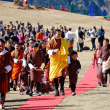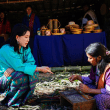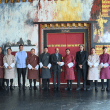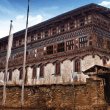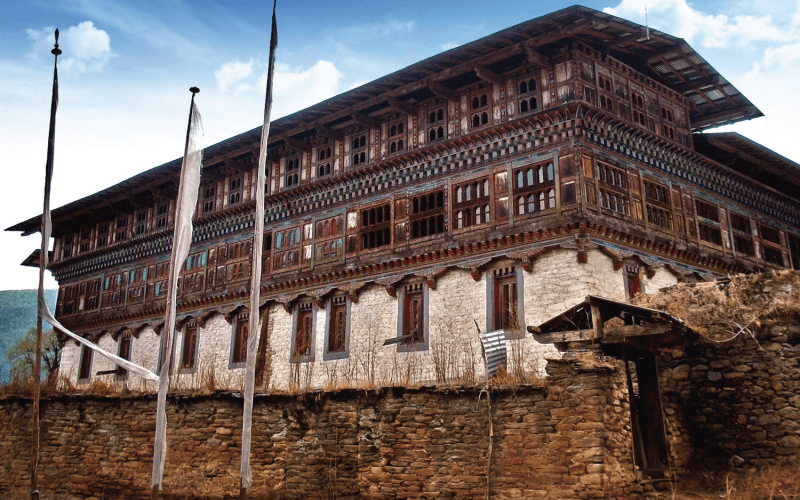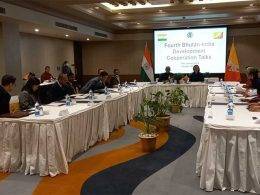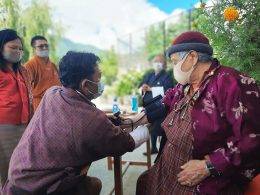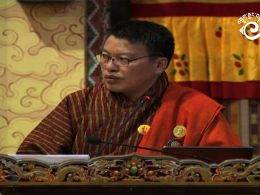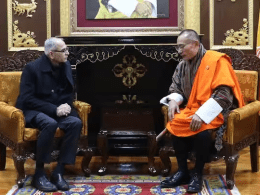In the rolling valleys of Bumthang and the mist-shrouded ridges of Trongsa lie some of Bhutan’s most treasured royal residences — palaces that shaped the nation’s monarchy and continue to echo with stories of kings and statesmen.
Unlike the imposing dzongs that symbolize Bhutan’s spiritual and administrative might, these palaces are more intimate, rooted in history yet still living spaces tied to the monarchy. Exploring them offers travelers not just an architectural journey, but a rare insight into the evolution of Bhutanese royalty.
Wangduechoeling Palace, Bumthang
Standing gracefully on the banks of the Chamkhar River, Wangduechoeling Palace was built in 1857 by Jigme Namgyel, the formidable “Black Regent” and father of Bhutan’s first king. It became the seat of the Wangchuck dynasty, and from here Bhutan’s monarchy began its journey.
The palace is unadorned compared to dzongs, reflecting the simplicity of Bhutanese royal life in the 19th century. Today, Wangduechoeling is preserved as a heritage site — its rambling courtyards and prayer halls invite visitors to imagine the early days of a monarchy that would later unify the nation.
Domkhar Palace, Bumthang
A short drive from Chumey Valley lies Domkhar Palace, another residence closely linked to the Wangchuck dynasty. Built by the Third King, His Majesty Jigme Dorji Wangchuck’s family, Domkhar is a quieter retreat surrounded by forests and fields.

Each year, the palace comes alive during the Domkhar Tshechu, a local religious festival where mask dances unfold against the palace’s backdrop. For visitors, Domkhar is a chance to experience royal history intertwined with living tradition, as villagers gather in their finest attire to celebrate.
Kuenga Rabten Palace, Trongsa
Perched dramatically on a ridge south of Trongsa town, Kuenga Rabten Palace was once the winter residence of the Second King, His Majesty Jigme Wangchuck. Built in the early 20th century, the palace boasts fine woodwork, delicate murals, and sweeping views over the Mangdechu Valley.
Though no longer used as a royal residence, it has been maintained as a heritage monument and is open to visitors. Walking through its chambers, one senses both the intimacy of a royal household and the grandeur of Bhutanese craftsmanship at its height.
Thruepang Palace, Trongsa
Trongsa is often called the cradle of Bhutan’s monarchy, and Thruepang Palace embodies that legacy. It was here, in this modest palace overlooking the old trade route, that the Third King, His Majesty Jigme Dorji Wangchuck — often hailed as the father of modern Bhutan — was born in 1928.

Unlike larger palaces, Thruepang has a homely character, with simple architecture that reflects the modest beginnings of a king whose vision transformed the nation. Travelers can admire its traditional design while imagining the young prince who once roamed its halls.
Samdrup Choling Palace, Trongsa
Samdrup Choling (Samcholing) Palace, located south of Trongsa town, was built in the 1930s and served as a winter residence for the royal family. When the highlands of Jakar grew frigid, members of the royal household would move here to Trongsa’s milder climate.
According to oral accounts, the site’s origins may trace back to a lama from the Wangduechoeling family who built a small temple at a place once called Khuley Pang (“the ground of gathering”). Later, the property passed through the Wangduechoeling noble lineage to Ashi Pema Dechen, who married the Second King, Jigme Wangchuck, in 1932. With royal patronage, the modest temple grew into a four-story palace — sometimes referred to as a dzong, though its purpose was residential rather than defensive.

Though no longer used as a royal residence, Samdrup Choling Palace remains vital to the local community. In the 1970s, the royal family gifted the site for public use, and since the 1980s it has hosted a Gomchen Dratshang (monastic school for lay practitioners). Annual festivals and rituals are still observed here, ensuring that the palace remains not just a relic of royalty but a living center of community and faith.
